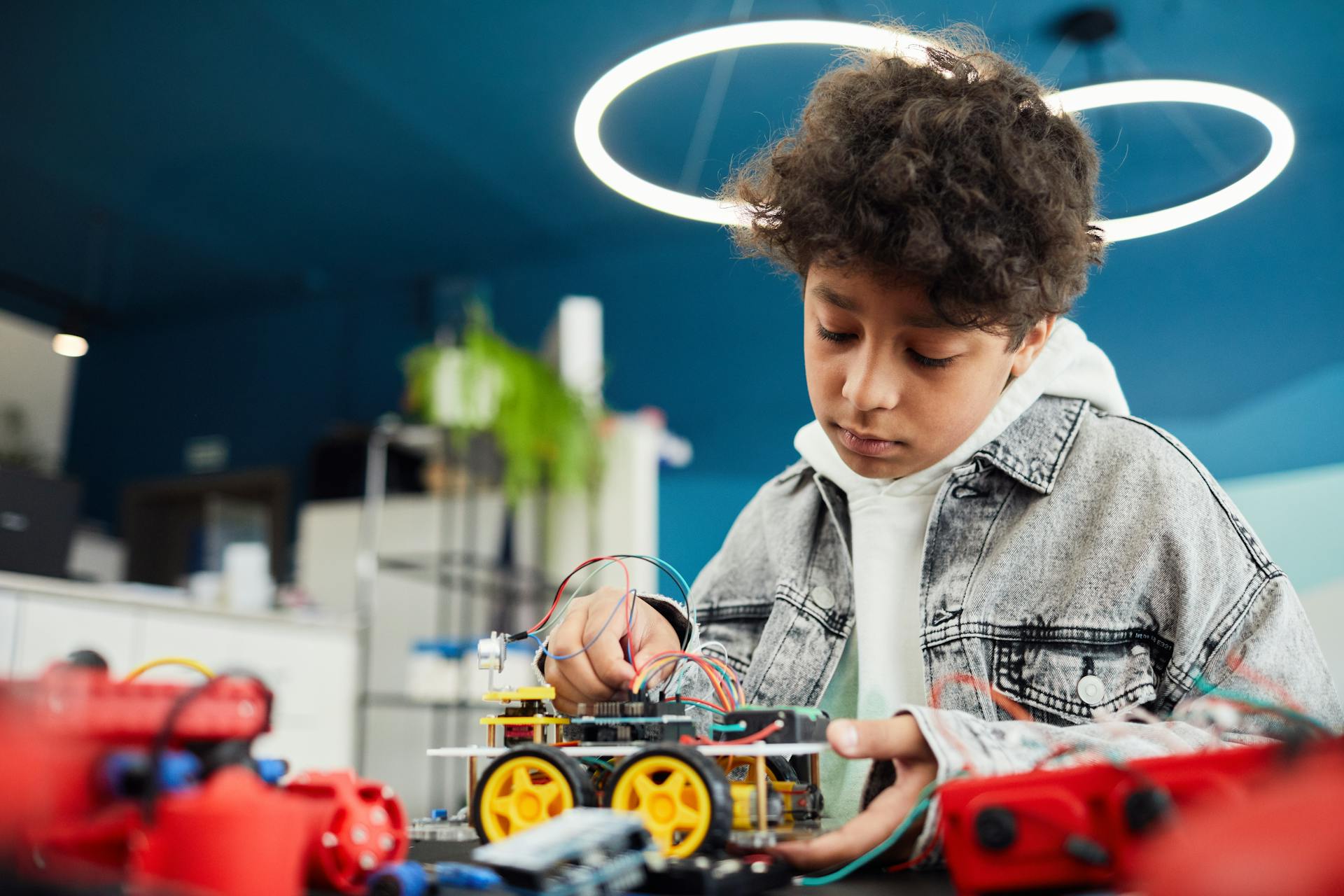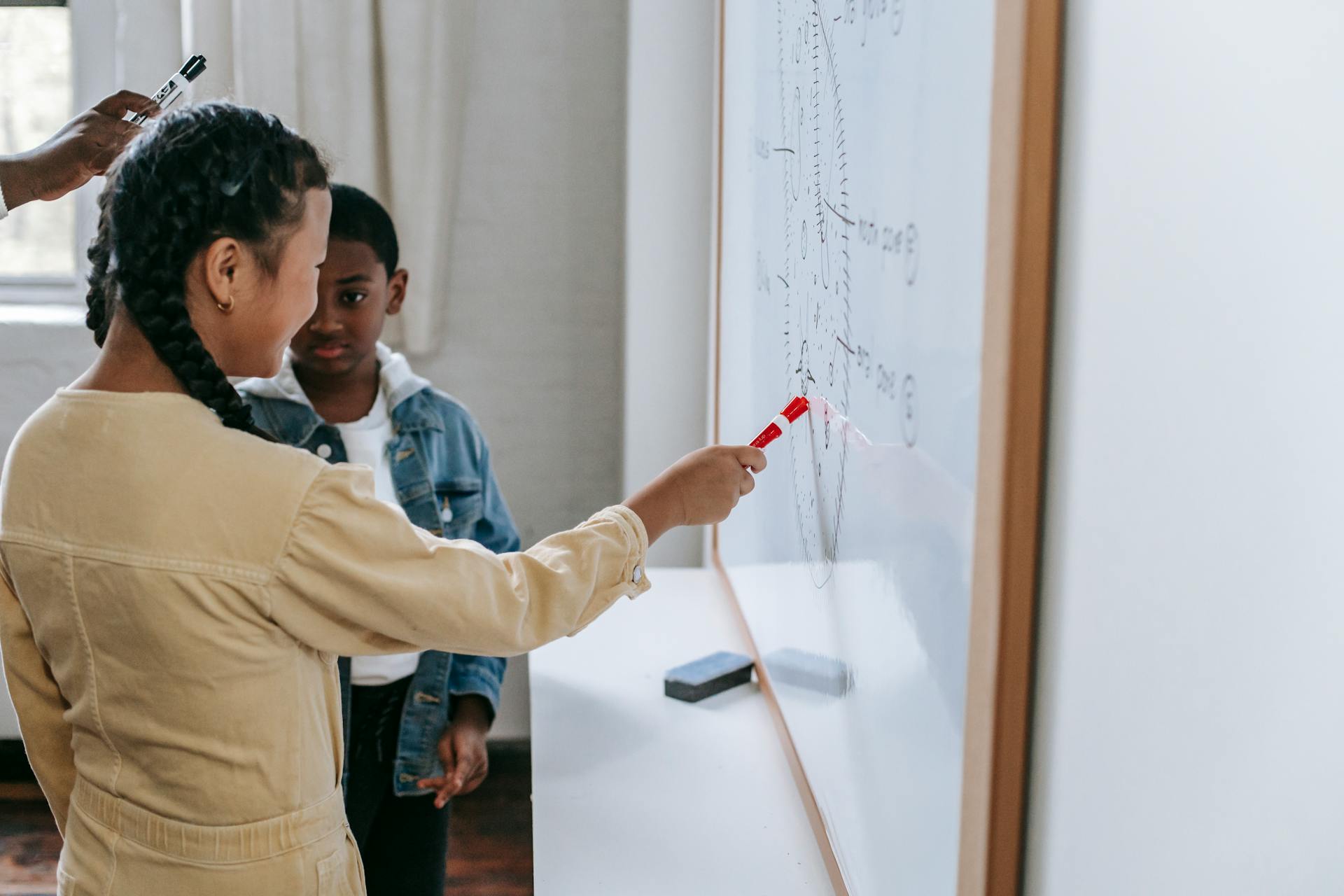
The demonstration learning method is a hands-on approach to learning that's all about showing and telling. It's a technique that's been used in various educational settings to help students understand complex concepts by observing and imitating a demonstration.
This method involves a teacher or instructor demonstrating a task or skill, often with the student watching closely. The teacher might provide verbal explanations, but the focus is on the demonstration itself. The idea is that by observing the demonstration, students can learn by doing rather than just listening to a lecture.
In a demonstration learning setting, the teacher's role is to facilitate learning by providing clear, concise demonstrations that students can follow. The teacher might also ask questions or provide feedback to help students understand and apply what they've learned. By doing so, students can develop problem-solving skills and think critically about the information they're learning.
The demonstration learning method can be particularly effective for students who learn best through hands-on experiences.
What Is the Demonstration Learning Method?
The Demonstration Learning Method is a hands-on approach to learning, where students learn by observing and imitating a skilled teacher or peer. This method is often used in vocational training and apprenticeships.
Students learn best when they can see a task being performed correctly, and the Demonstration Learning Method takes advantage of this fact. The method is often used in combination with other teaching methods, such as hands-on practice and feedback.
By observing a demonstration, students can pick up new skills and techniques quickly and efficiently. In fact, research has shown that students who learn through demonstration retain information better than those who learn through traditional lecture methods.
The Demonstration Learning Method is particularly effective for complex tasks that require a high degree of manual dexterity or technical skill. For example, learning to play a musical instrument or operate a piece of heavy machinery requires a combination of observation, imitation, and practice.
In a demonstration learning environment, students are encouraged to ask questions and seek feedback from the teacher or peer demonstrating the skill. This helps to clarify any misunderstandings and ensures that students are on the right track.
Features of
The demonstration learning method is all about making learning fun and engaging. It's essential to have clear goals and objectives in mind before starting the demonstration.
To make the demonstration process effective, it's crucial to have a well-planned strategy. This will help you stay on track and ensure that everything runs smoothly.
During the demonstration, it's vital to focus all attention on the students' behavior and activities. This will help them stay engaged and motivated.
Clear and easy-to-understand language is also essential during the demonstration. This will help students grasp the concepts being taught.
Here are the key features of the demonstration method:
By following these key features, you can make your demonstrations engaging, informative, and effective.
Advantages and Merits
One of the key benefits of this method is that it allows students to pay attention easily and follow the learning process. This is because the demonstration method requires different senses, making knowledge gained more permanent.
Suggestion: Bootstrap Method Machine Learning
The demonstration method also leads to permanent learning, as students are able to see the process live and understand how to apply theoretical knowledge practically. This reduces the risk of information being forgotten.
This method is beneficial in achieving a psychomotor objective, which is a critical aspect of learning. It also helps students in having a deeper understanding of the subject and keeps them engaged and active throughout the teaching-learning process.
By using the demonstration method, teachers can explain even complex topics in a way that's easy for students to understand. This method also allows students to participate and discuss in a group, building social skills in the process.
Here are some of the key merits of the demonstration method:
- Improves understanding of complex skills and principles.
- Learners can pay attention and follow along with the learning process.
- Psychomotor objective is easily achieved through this method.
- Develops interest in learners and motivates them for active participation.
By incorporating the demonstration learning method into your teaching strategy, you can create a more engaging and effective learning environment for your students.
Steps Involved
The demonstration learning method is a powerful approach to teaching and learning, and it's essential to understand the steps involved to make it effective.
The first step is planning and preparation, which involves thorough detailed preparation of the subject matter and well-structured lesson planning. This step is crucial in ensuring the success of the demonstration method.
To prepare the lesson, the teacher should consider individual differences, environmental setup, and differentiated experiences. This helps to create a lesson that is engaging and relevant to all students.
The teacher should also introduce the lesson to students by starting with simple and interesting experiments, fascinating stories, or common events that everyone can relate to. This helps to capture the students' attention and make the lesson more interactive.
The presentation of subject matter is critical in the demonstration method, and it should be done in a way that allows students to link their previous knowledge to new knowledge. This helps to enhance their understanding and retention of the material.
The teacher should also use various teaching aids like models, blackboards, graphs, and whiteboards to help explain concepts and make the demonstration more engaging.
In the final step, evaluation of the whole demonstration should be done to identify areas for improvement and make the demonstration more effective and efficient in the future. This involves using feedback and evaluation to improve the results in the next demonstration process.
Here are the steps involved in the demonstration method in a concise format:
- Planning and preparation: Thorough detailed preparation of the subject matter and well-structured lesson planning.
- Introduction of the session: Motivating learners and preparing them mentally for the demonstration.
- Presentation of the subject: Teaching in a manner that allows all learners to link previous and new knowledge.
- Actual demonstration: Ensuring the demonstration is neat and clean, and incorporating various teaching aids.
- Evaluation: Evaluating the whole demonstration to identify areas for improvement.
Planning and Preparation
Planning and preparation are key to a successful demonstration. Proper planning is required for good demonstration.
To start, the teacher should prepare the subject matter thoroughly. Lesson planning is also crucial, as it helps the teacher to organize their thoughts and ensure a smooth demonstration.
The teacher should collect all the necessary materials related to the demonstration, including equipment, diagrams, and handouts. Rehearsal of the demonstration is also important to ensure that everything runs smoothly and on time.
Here are the key steps to keep in mind for planning and preparation:
- Through the preparation of subject matter.
- Lesson planning
- Collection of material related to the demonstration.
- Rehearsal of demonstration.
Planning and Preparation
Planning and preparation are crucial steps in delivering a successful demonstration. To plan effectively, you need to prepare your subject matter thoroughly.
Proper planning requires considering several key points. These include preparing the subject matter, lesson planning, collecting materials related to the demonstration, and rehearsing the demonstration itself.
A well-prepared lesson is essential for a successful demonstration. This involves meticulously preparing the lesson and taking it very seriously.
Here are the essential steps to keep in mind for planning and preparation:
- Through the preparation of subject matter.
- Lesson planning
- Collection of material related to the demonstration.
- Rehearsal of demonstration.
Aids
Using various teaching aids can greatly enhance the learning experience. The teacher can use models, blackboard, graphs, and other visual aids during demonstration.
A teacher can also use the blackboard to illustrate complex concepts and ideas. This can help students to better understand the material.
Models can be a particularly effective teaching aid, allowing students to see and interact with three-dimensional representations of abstract concepts.
Teaching and Evaluation
The demonstration learning method involves a final step of evaluation, where the whole demonstration is assessed to make it more effective. This evaluation step accounts for the principles of reflective thinking.
It's essential to take the time to reflect on what worked well and what didn't, so you can make adjustments for future demonstrations.
Here's an interesting read: Demonstration of Learning
Subject Matter Presentation
Subject Matter Presentation is crucial in teaching and evaluation. It helps students develop an interest in the subject and fosters active engagement.
The demonstration method is an effective way to present subject matter, as it develops an interest in the learners and fosters active engagement from them. It also helps in involving various senses to make learning permanent.
To present subject matter effectively, the teacher should teach the student in such a way that their previous knowledge can be attached to their new knowledge. This helps students build upon what they already know and reinforces their understanding.
A demonstration presentation of subject matter is very important. It allows students to see and experience the concept firsthand, making it more memorable.
To make learning permanent, teachers should involve various senses in the demonstration. This can include visual, auditory, and kinesthetic elements.
Here are some benefits of using the demonstration method:
- Develops an interest in the learners
- Fosters active engagement from the students
- Involves various senses to make learning permanent
- Any complex topic can be easily explained with this method
- Involves active participation from the students
Evaluation
Evaluation is a crucial step in the teaching process. It should be done at the end of a demonstration to make it more effective.
Evaluation accounts for the principles of reflective thinking. This means considering what worked well and what didn't, and using that information to improve future demonstrations.
In the evaluation process, you should reflect on the whole demonstration, not just individual parts. This will help you identify areas that need improvement.
Sources
- https://blog.teachmint.com/demonstration-method-an-introduction/
- https://www.legit.ng/1142120-definition-advantages-disadvantages-demonstration-method-teaching.html
- https://physicscatalyst.com/graduation/demonstration-method/
- https://www.edglossary.org/demonstration-of-learning/
- https://www.slideshare.net/slideshow/demonstration-a-teaching-method-249339744/249339744
Featured Images: pexels.com


